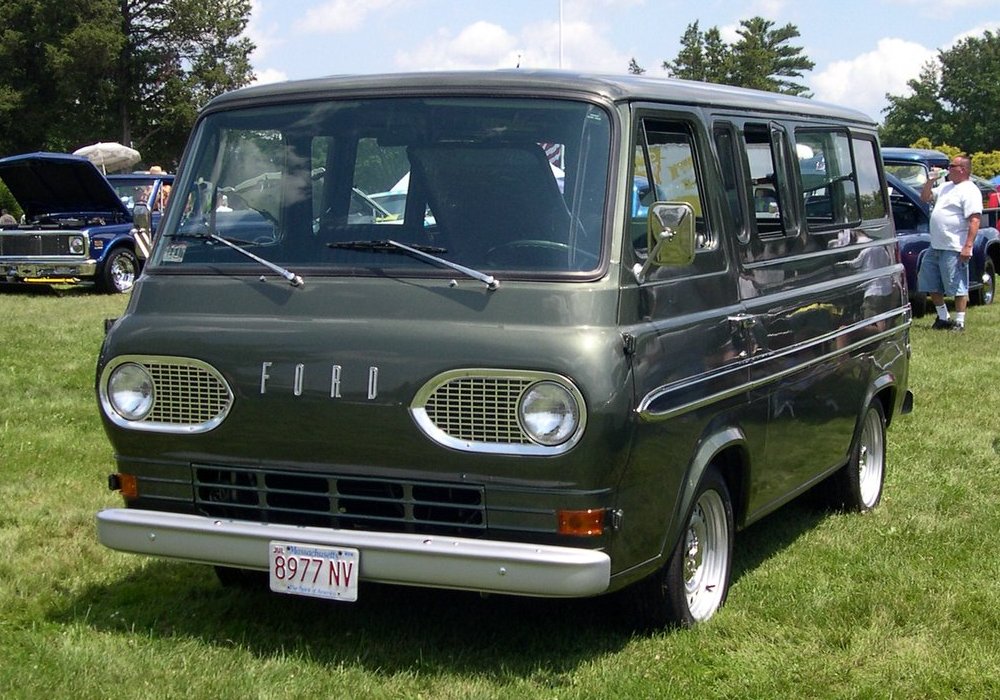Description
The Ford Club Wagon was the passenger-carrying version of Ford’s long-running Econoline van, designed to serve as a spacious, versatile vehicle for families, businesses, and institutions that needed to transport multiple people in comfort. Introduced in the early 1960s and produced for several decades, the Club Wagon offered the utility of a full-size van with the refinement and convenience features expected of a passenger vehicle. It became a common sight in suburban driveways, school parking lots, and fleet service, cementing its reputation as one of Ford’s most useful people-movers.
In its earliest form, the Club Wagon was essentially an Econoline panel van fitted with windows and seats, but as the model evolved, it gained more attention to passenger comfort and styling. By the late 1960s and 1970s, the Club Wagon had taken on the more squared-off, full-size van shape that became iconic. Large side windows, wide-opening rear and side doors, and a tall roofline emphasized practicality, while trim levels ranged from utilitarian to more upscale versions with chrome accents, two-tone paint, and decorative striping.
Inside, the Ford Club Wagon was built to accommodate anywhere from eight to fifteen passengers, depending on seating configuration. The base models were straightforward, with vinyl bench seats and minimal trim, aimed at shuttle services, schools, or work crews. Higher trims, however, added comfort and style. By the 1970s and 1980s, the more luxurious Club Wagon versions featured padded seating, upgraded upholstery, carpeting, wood-grain dash panels, and convenience features such as air conditioning, AM/FM stereos, and later, power windows and locks. This made the Club Wagon a practical alternative to a station wagon for large families or a comfortable people-carrier for commercial use.
Under the hood, the Club Wagon was offered with a wide variety of engines over the years, reflecting its adaptability to different roles. Inline-sixes were available for economy and simplicity, while small-block and big-block V8s such as the 302, 351, 390, and later the 460 cubic inch engines delivered more power for hauling passengers and cargo. By the 1980s and 1990s, fuel-injected V6 and V8 engines brought more efficiency and reliability, with automatic transmissions becoming the norm. The combination of rugged drivetrains and body-on-frame construction meant that Club Wagons were durable and capable of handling heavy use.
On the road, the Club Wagon was not about speed or agility, but it offered a stable and commanding driving experience. Its truck-like chassis gave it the strength to carry full loads of passengers and luggage, while the suspension was tuned for comfort over long distances. Later models also benefitted from improvements in sound insulation, ride quality, and safety features, keeping them competitive in a market increasingly focused on family and commercial transport.
The Club Wagon appealed to a wide range of buyers. Families appreciated the space and versatility, businesses used them as shuttles or transport vans, and institutions like schools and churches relied on them for group transportation. The wide variety of trims and options allowed Ford to market the Club Wagon as both a basic workhorse and a luxurious people-mover.
Today, the Ford Club Wagon is remembered as a symbol of American practicality, a vehicle that served countless roles across decades. While many were used heavily and worn out in service, surviving examples—especially well-equipped or rare trims—are cherished by enthusiasts who appreciate their vintage charm and durability. In its many forms, the Club Wagon showcased Ford’s ability to blend utility, comfort, and adaptability, making it one of the most recognizable full-size passenger vans of its era.
